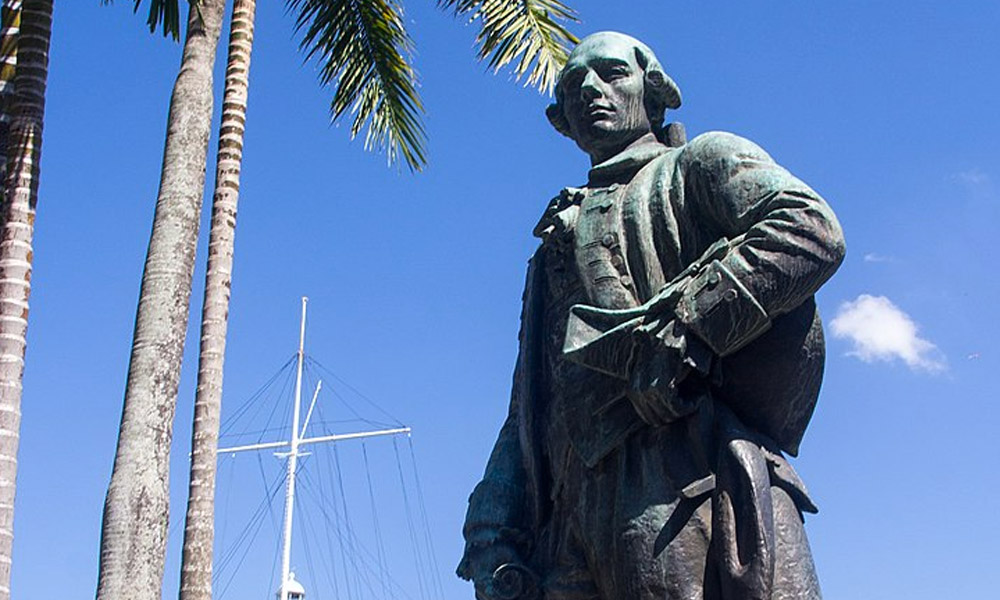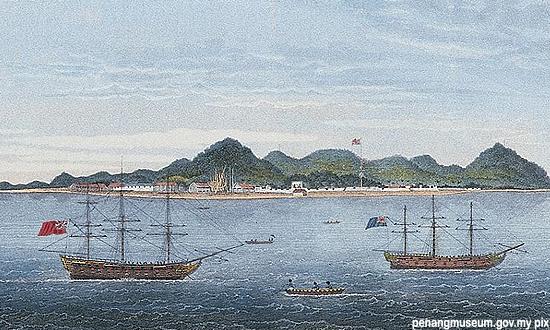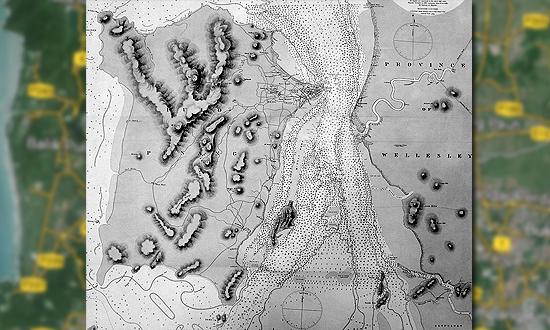HISTORY: TOLD AS IT IS | Recently, the media has reported on the intense debate among both politicians and academicians pertaining to the acquisition of Penang island by Francis Light on behalf of the East India Company in 1786 and Kedah’s territorial rights over Penang.
The debate centres around four core issues.
First, was Francis Light’s occupation of Penang island in August 1786 lawful? Second, did Sultan Abdullah Mukarram Shah of Kedah (reigned 1778-98) cede Penang island to the East India Company? Third, was Kedah a sovereign state or a province of Siam (now Thailand) when it allowed the British occupation of Penang island? Fourth - and perhaps what is particularly significant in the light of current political context - is it historically justifiable for Kedah to currently reclaim Penang as part of its territory?
As historical background, Francis Light, a country trader, took possession of Penang island on behalf of the East India Company on Aug 11, 1786, and renamed it as Prince of Wales Island. The East India Company was formed in 1600 for trade with the East Indies, with its Eastern headquarters in Calcutta and the home office in London.

The East India Company was interested in establishing a British settlement in Penang for three main reasons.
First, it needed a naval base to the east of the Bay of Bengal to buttress its defence on the Coromandel Coast of India which was often threatened by the French navy. Second, it had a flourishing and important trade with China. Thus, it wanted a suitable port of call or refitting station between India and China for ship repairs, refuelling and replenishing supplies. Third, Penang could also serve as a collecting centre for Straits produce, particularly spices and tin.
The then ruler of Kedah, Sultan Abdullah Mukarram Shah agreed to lease Penang island to the East India Company via a letter dated Aug 31, 1785, and addressed to the Governor-General of India, and subject to several conditions. He primarily wanted British military protection against his hostile and predatory neighbours, particularly in warding off Siamese and Burmese threats and their claims to tributary service. Sultan Abdullah also sought an annual compensation of 30,000 Spanish dollars from the East India Company for loss of trade monopoly in Kedah.
Then Acting Governor-General of India John Macpherson wrote to Sultan Abdullah that he had transmitted to England the Sultan’s terms for the occupation of Penang island. The Governor-General had deferred entering into a treaty with Sultan Abdullah until an answer should arrive from the Court of Directors in London. However, the East India Company proceeded to establish a settlement on Penang Island with Francis Light appointed as its Superintendent without waiting for the official go-ahead from London.
Unlawful occupation
In addition, despite being fully aware of Sultan Abdullah’s unwillingness to allow the East India Company to take possession of Penang island without definite guarantees of military protection and a fixed sum of compensation, Francis Light took possession of it and established a British settlement.
Thus, on the first issue, Francis Light’s occupation of Penang island in 1786 was definitely unlawful as its lease was conditional on the acceptance of Sultan Abdullah’s terms. As stated by Rollins Bonney in his book, ‘Kedah 1771-1821: The Search for Security and Independence’, the declaration of Penang island as a British possession was illegal as Francis Light did so “without a satisfactory reply to the conditions specified by Sultan Abdullah.”
As for the second issue, several leading historians have erroneously stated that Penang was ceded to the East India Company in 1786 through a treaty arrangement. The truth of the matter is that Penang island was never ceded to the East India Company in 1786. Francis Light was merely granted temporary occupation of Penang island until such time a definite reply to Sultan Abdullah’s specific conditions was given by the East India Company. It should also be noted that no formal treaty was ever signed in 1786 between both parties pertaining to the lease of Penang island.
Let’s now explore the third issue as to whether Kedah was a sovereign state or a province of Siam when Sultan Abdullah offered the East India Company to establish a British settlement on Penang island. Kedah traditionally sent the ‘Bunga Emas dan Perak’ (Golden and Silver Flowers) triennially to Siam, its northern powerful neighbour, as a token of friendship and alliance. For the record, Kedah had also occasionally sent the Bunga Emas to Burma to ensure its political survival and peaceful coexistence.

According to Rollins Bonney, the Bunga Emas was a “free-will and complimentary offering” which was commonly practised by other smaller mainland states and principalities. This view is supported by the fact that the Siamese king reciprocated by providing gifts of about equal value. On the other hand, the Siamese king regarded the Bunga Emas as a vassal-suzerain relationship – a token of submission by a vassal to an overlord. In this regard, Siam often demanded Kedah to provide men, arms and supplies in its wars with Burma.
As rightfully stated by Kobkua Suwannathat-Pian in his book, ‘Thai-Malay Relations: Traditional Intra-regional Relations from the Seventeenth to the Early Twentieth Centuries’, Kedah was “repeatedly forced to accept Siamese overlordship whenever Siam was strong and aggressive, but when Siamese authority was weak … [Kedah] automatically assumed an independent stand, or sought aid and alliance somewhere.” This was precisely why Sultan Abdullah was willing to lease Penang island to the East India Company in return for a defensive alliance - to assert Kedah’s independence and to get rid of Siamese and Burmese military threats.
It is significant to note, as reiterated by Rollins Bonney, that when the East India Company negotiated with Kedah for the occupation of Penang island in 1786, it did so by regarding Kedah as an independent state and acknowledging Penang island as an integral part of Kedah. Equally important is the fact that the Siamese, despite claiming overlordship over Kedah, never formally opposed the East India Company’s occupation of Penang island.
Attack on Perai
Finally, is there any historical basis for Kedah to currently claim that Penang is part of its territory?
To answer this question, one needs to delve into events after Francis Light took possession of Penang island. Despite being informed in February 1787 and again in February 1788 about the East India Company’s reluctance to defend or assist Kedah against its enemies, Francis Light kept on giving evasive answers to Sultan Abdullah’s request for a defensive alliance.
Sultan Abdullah was only told in June 1788, after exerting pressure on Francis Light, about East India Company’s unwillingness to grant Kedah military assistance. Regarding compensation, Francis Light made an offer of $10,000 per annum for a limited period of eight years or an annuity of $4,000 as long as the British occupied Penang island. This compensation offer was way below Sultan Abdullah’s stipulated figure of $30,000 per annum.
Feeling cheated by Francis Light and the East India Company, Sultan Abdullah assembled a war fleet at Perai in April 1791 to expel the British from Penang island. Francis Light, who got wind of it, launched a surprise night attack on April 12, 1791, and successfully scattered the Kedah naval force.
In the 1791 Treaty of Peace and Friendship that followed Francis Light’s attack on Perai, Kedah recognised the East India Company’s occupation of Penang island. This treaty is of great significance as it made British occupation of Penang island lawful. The East India Company, in return, agreed to pay an annual compensation of $6,000 as long as the British occupied Penang island. Many historians have wrongly concluded that, as a result of this treaty, Penang island was “ceded” to the East India Company.
Additionally, based upon Article 2 of the Treaty of Peace, Friendship and Alliance signed between the East India Company and Sultan Dhiauddin Mukarram Shah of Kedah in 1800, Province Wellesley (Seberang Perai) was ceded to the East India Company in perpetuity. The British agreed to pay the Sultan of Kedah $10,000 a year as long as the East India Company occupied Penang and Province Wellesley.

In 1826, Penang joined with Malacca and Singapore to form the Straits Settlements which were administered by the Government of India until 1867. In 1867, the Straits Settlements were transferred to direct rule from London as a crown colony.
Hence, there is no historical justification for Kedah to currently claim that Penang is part of its territory. Incidentally, our distinguished historian, the late Professor Emeritus Khoo Kay Kim in a July 2015 interview with Astro Awani also reiterated that Penang is no longer part of Kedah and there is no historical justification for Kedah to reclaim Penang.
In short, while Francis Light’s initial occupation of Penang island in 1786 was illegal, it was made lawful by the 1791 Treaty of Peace and Friendship. Province Wellesley was ceded by Sultan Dhiauddin of Kedah to the East India Company through the 1800 Treaty of Peace, Friendship and Alliance.
Simply put, Penang is historically and lawfully a state by itself as enshrined in the Federal Constitution. This is the historical fact. For anyone to claim otherwise shows either a lack of understanding or a biased and selective interpretation of the history of British colonisation of Penang and Malaya, and Kedah-Penang relations. - Mkini
RANJIT SINGH MALHI is an independent historian who has written 19 books on Malaysian, Asian and world history. He is highly committed to writing an inclusive and truthful history of Malaysia based upon authoritative sources.
The views expressed here are those of the author/contributor and do not necessarily represent the views of MMKtT.

No comments:
Post a Comment
Note: Only a member of this blog may post a comment.